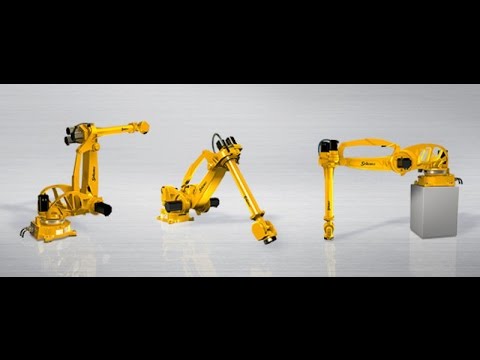Industrial Robotics Market is Expected to Reach $41.17 Billion, Globally, by 2020
Introduction
The industrial robotics market is experiencing significant growth, with experts predicting that it will reach a value of $41.17 billion by 2020. This surge is fueled by advancements in technology and the increasing need for automation in industries such as automotive, electronics, and healthcare. In this article, we will delve into the various types of industrial robots and explore the current trends in the market.
Types of Industrial Robots
1. Articulated Robots
Articulated robots are perhaps the most common type in industrial settings. They are known for their numerous joints, making them highly flexible and capable of mimicking human arm movements. These robots are widely used in applications such as welding, material handling, and assembly lines. Their versatility and high precision make them ideal for performing complex tasks with ease.
2. SCARA Robots
SCARA, which stands for Selective Compliance Assembly Robot Arm, is mainly utilized in assembly and packaging processes. These robots have a horizontal arm and a vertical shaft, giving them the ability to perform tasks in a fast and accurate manner. SCARA robots are commonly found in industries that require high-speed and repetitive motion, such as the production of electronic devices.
3. Cartesian Robots
Cartesian robots, also known as gantry robots, are characterized by their three linear axes. These robots move in a rectangular pattern, making them suitable for applications that require precise and repetitive movements. They are often used in industries like packaging, material handling, and CNC machining.
4. Delta Robots
Delta robots have gained popularity due to their speed and precision. They are typically used for tasks that involve picking, placing, and packaging items. With their unique design of three arms connected to a base, delta robots can be found in industries that require fast and accurate assembly lines, such as the food and beverage industry.
5. Collaborative Robots
Collaborative robots, or cobots, are a recent addition to the industrial robotic landscape. Unlike traditional robots, cobots can work alongside humans, enhancing productivity without compromising safety. They are equipped with sensors and advanced software that enable them to detect human presence and adjust their movements accordingly. This feature makes cobots highly versatile and perfect for small-scale industries.
Industrial Robotics Market Trends
1. Increasing Demand in Automotive Sector
The automotive industry has been a major driver of the industrial robotics market. The need for automation in tasks such as welding, painting, and assembly has led to the significant adoption of industrial robots. These robots not only increase efficiency and precision but also relieve workers from performing hazardous tasks. As the automotive industry continues to evolve, the demand for industrial robots is expected to soar.
2. Rising Need in Electronics Industry
The electronics industry heavily relies on industrial robots for assembly, testing, and packaging processes. With the rapid development of technology, the demand for electronic devices has skyrocketed, leading to an increased need for automation. Industrial robots provide the speed and accuracy required for producing electronic components in large quantities. As this industry continues to expand, the market for industrial robotics is predicted to grow dramatically.
3. Growing Importance in Healthcare Sector
The healthcare industry has witnessed a surge in the use of industrial robots, especially in surgical procedures. Robot-assisted surgeries offer numerous benefits, including enhanced precision, reduced recovery time, and smaller incisions. Through automated and robotic devices, surgeons can perform complex operations with minimal invasiveness. As the healthcare sector embraces these advancements, the industrial robotic market is projected to experience substantial growth.
4. Advancements in Artificial Intelligence and Machine Learning
The integration of artificial intelligence and machine learning algorithms in industrial robots has revolutionized the market. These advancements enable robots to adapt to changing environments, learn from their experiences, and make autonomous decisions. This level of intelligence has opened up new possibilities for industrial robots, such as autonomous navigation and collaboration with humans. As researchers continue to push the boundaries of AI and machine learning, the industrial robotics market is expected to witness further innovation and expansion.
Conclusion
The industrial robotics market is expanding at a rapid pace, driven by the need for automation and advancements in technology. The various types of industrial robots, including articulated robots, SCARA robots, cartesian robots, delta robots, and collaborative robots, cater to different industries and applications. The trends in the market, such as the increasing demand in the automotive and electronics sectors, the growing importance in the healthcare industry, and advancements in artificial intelligence and machine learning, are shaping the future of industrial robotics. As we move forward, the industrial robotics market is expected to continue its upward trajectory, reaching new heights by 2020.
References
- Industrial Robotics Market – Global Opportunity Analysis and Industry Forecast, 2013-2020
- Types of Industrial Robots | Industrial Robotics Market Trends, Forecast 2013-2020
Industrial Robot
"Exploring the Latest Trends and Types of Industrial Robots: A Comprehensive Analysis of the Industrial Robotics Market from 2013 to 2020"


